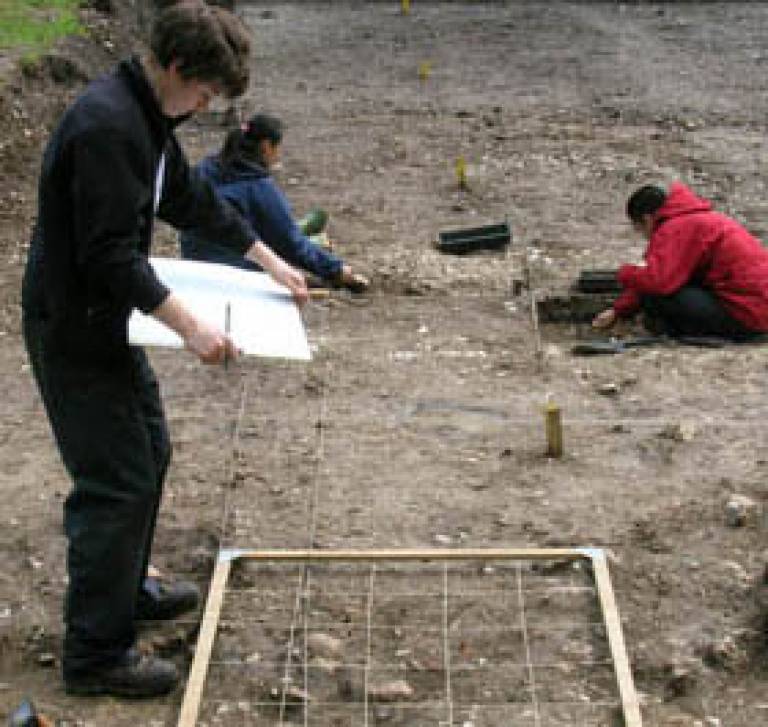6,000 acre estate promises wealth of archaeology
12 July 2006
A 6,000 acre estate in the South Downs featuring Bronze Age burial mounds, Iron Age enclosures and the remains of Roman villas and Medieval churches provides a new focus for UCL Archaeology students to learn field and analytical techniques.

The West Dean Estate has everything from Palaeolithic and Mesolithic flint scatters to the industrial archaeology of a dismantled railway line, making it an ideal location for students to gain a grounding in survey skills, excavation methods and environmental studies.
"It is a privilege for us to be able to work with West Dean College and the Edward James Foundation to investigate the wealth of archaeology in this area," said Dr Bill Sillar (UCL Archaeology), one of the leaders of the project. "As our work on the estate progresses, our findings will provide the context for teaching key skills and encouraging critical debate among students. For example, students on next year's MA in Artefact Studies will use the finds from this year's excavations at Batten Hangar Roman Villa to investigate changes to the economic activities and identity of the villa's residents."
Each successive group of up to 80 students will contribute to an archaeological survey of the estate, with aim of understanding how land occupation and use has changed over the centuries. All undergraduates will spend four days at West Dean for their experimental archaeology course, deepening their appreciation of ancient technologies and the remains that are produced from different activities.
The move to West Dean heralds a closer working relationship with the UCL Centre for Applied Archaeology, which explores ways of developing research and teaching opportunities in relation to its role as a commercial unit (known as Archaeology South-East). Archaeologists from the Centre are drawing on their in-depth knowledge of Sussex to help develop innovative approaches to recording the survey and excavation data.
Given the diversity of the history within the estate, Dr Andrew Gardner (UCL Archaeology), another project leader, envisages that postgraduate students will be attracted to West Dean. It is also likely that some undergraduates will return to West Dean towards the end of their degree to collect original data for their dissertations.
The appeal of this picturesque area of Sussex Downland stretches beyond the archaeology department. The UCL Slade School of Fine Art already has connections with West Dean College, a specialist arts and crafts centre located within the estate, and all three are applying for funding for a joint project to investigate the relationship between art, archaeology and public access.
Alongside this, a range of outreach programmes will bring the discoveries at West Dean to a wider audience. Children from West Dean Primary and Camden's Young Archaeologists Club have taken part in the dig this year. In the future, the project team plans to work with local groups to undertake field walking and graveyard surveys, create teaching resources and develop guided walks with an archaeological slant.
Image 1: Students at the start of excavations at Batten Hangar Roman Villa
Image 2: Separating silver and lead in a bone ash cupel on the experimental archaeology course
 Close
Close

